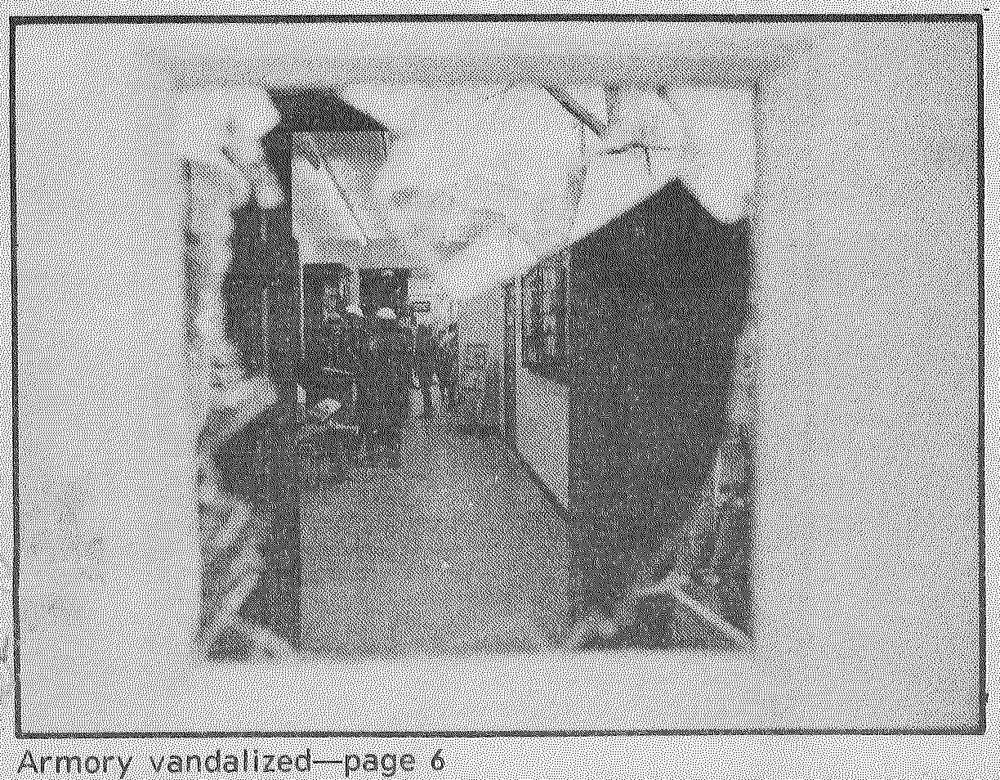From The Struggle Is Our Inheritance
 Despite the few successes the anti-war movement has had in the past few years, any means to real change has been hijacked by a shrill minority that wishes to impose permits, routes, parade marshals (e.g. peace police), zones of “protest” and other such nonsense, turning our rage and creativity into a well-ordered media spectacle, or worse, mass arrest. The constant and insincere calls for “solidarity” and “protecting others” have turned our once raucous resistance into an exercise of well-organized crowd control.
Despite the few successes the anti-war movement has had in the past few years, any means to real change has been hijacked by a shrill minority that wishes to impose permits, routes, parade marshals (e.g. peace police), zones of “protest” and other such nonsense, turning our rage and creativity into a well-ordered media spectacle, or worse, mass arrest. The constant and insincere calls for “solidarity” and “protecting others” have turned our once raucous resistance into an exercise of well-organized crowd control.
But it hasn’t always been like this…
University of Minnesota, May 10, 1972
At about 1 p.m., University police were watching paper fall from broken windows. It was windy and the papers blew every which way, just as the rocks being thrown by protestors. Protestors were tearing down an iron fence surrounding the Armory. An overturned 1962 Chevrolet burned in the streets as protestors chanted: “One. Two. Three. Four. We don’t want your fucking war.” A few blocks away, three 30-man squads of police in full riot gear were preparing to march towards the armory. The University Vice-President had gotten wind that protestors planned to burn down the armory. So he called in the police.

The preceding weeks had been filled with attempted occupations at an Air Force base and Morrill Hall. Then on May 8, Nixon announced the bombing of Haiphong Harbor. What followed has come to be called the “Eight Days of May” occurring between May 9 – 16, 1972. These were the largest and most violent protests at the University. Beginning with a May 9 protest against the opening of the Cedar-Riverside Housing development, the protests quickly spread to the East Bank where confrontations between police and protestors occurred.
More than 3,000 protesters overtook the campus to protest the bombing. It began as a planned march to the Air Force recruiting office in Dinkytown, but a group of individuals occupied the building and trashed the recruiter’s office. The protest quickly increased into a full-blown riot.

Rows of patrolmen moved toward the crossover bridge near the student union. Protesters standing on the crossing hurled bricks into the rows of police officers. One brick slammed a patrolman in the head, breaking the shield on his helmet. They were nearly in the midst of the crowd when they were ordered by their commander to retreat.
Windows had been broken at the recruiting station and Armory. Barricades were built at intersections along Washington. Teargas was dropped from helicopters throughout the Campus and surrounding Dinkytown since police could not get near the bands of protestors. With the growing hatred for the police and with no end in sight, the Vice-President of the University turned to the Governor for help. They called in the National Guard.

Over 550 guardsmen were called in the next day to patrol the campus. Yet, protestors continued to build barricades, and a group had gathered on I-94 and stopped traffic. A rally at the Coffman Union drew 6,500 people. Several explosions and fires occurred on the campus throughout the evening and night. There was an explosion in a Kolthoff Hall chemistry laboratory; a fire in the basement of Ford Hall; and a gasoline bomb thrown through a chemistry building window.
At 5 a.m., May 12, protestors confronted police and National Guardsmen who attempted to remove a barricade at University and Church St. After a rally at the Coffman Union at noon, protestors reoccupied Washington and eventually established a blockade at the bridge near Ford Hall. Occupations and blockades were seen as a way of stopping “business as usual” at places that contributed to the war effort, either directly or indirectly. One protestor had remarked, “Vietnam permeated everything. By stopping traffic, you could help stop the war.”
Teach-ins were called for May 17th and 18th. This was hosted by Communities for an Open and Peaceful Education, a group of students, faculty, and staff to communicate campus action towards Vietnam. “The feeling was that things had been taken too far,” recalled a COPE member. “We’d channel the energies people had in protesting the war towards positive things.” Meanwhile, Marv Davidov helped to lead an occupation of Johnston Hall. By the time of the teach-ins, campus tensions had died down.
U.S. military involvement in Vietnam ended in 1973 as a result of sustained guerilla warfare on behalf of the National Liberation Front and the Viet Cong. Student moods changed quickly after the war. One of the participants later noted, “By the late ‘70s, apathy set in, and it’s continued to this day.”
